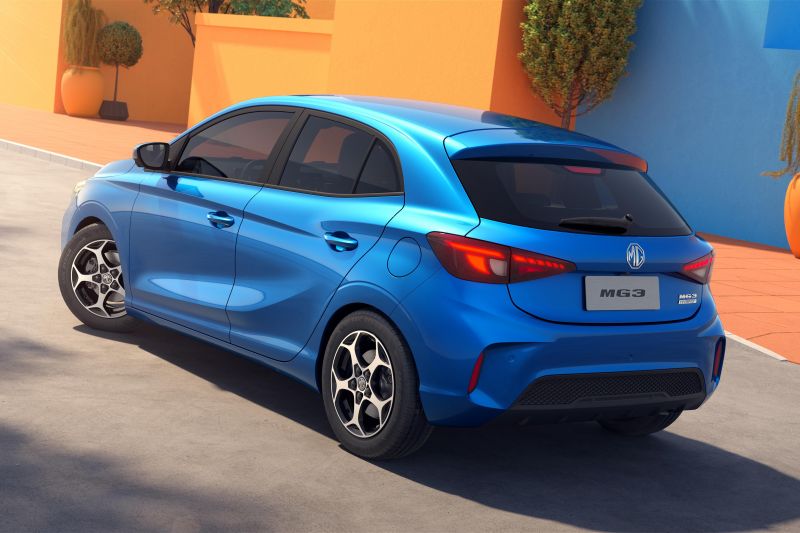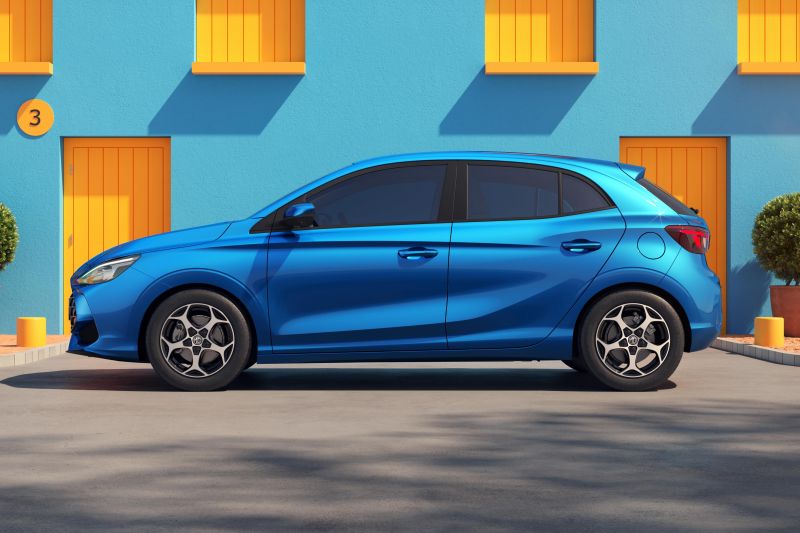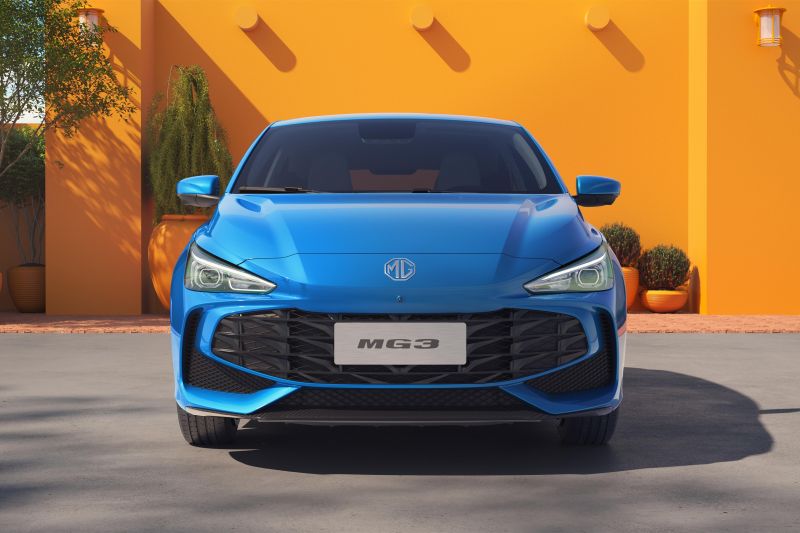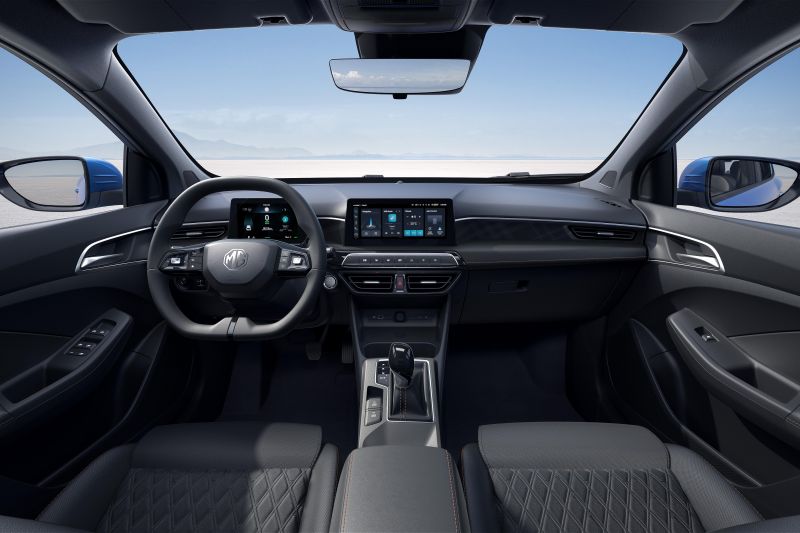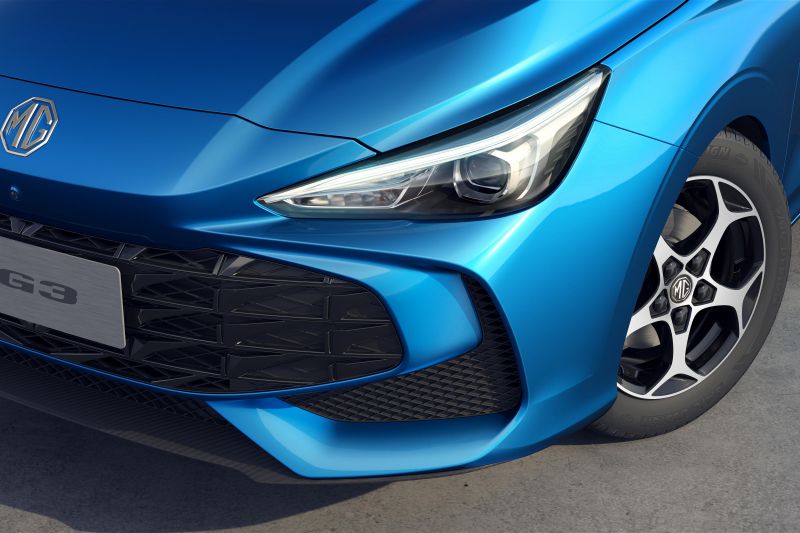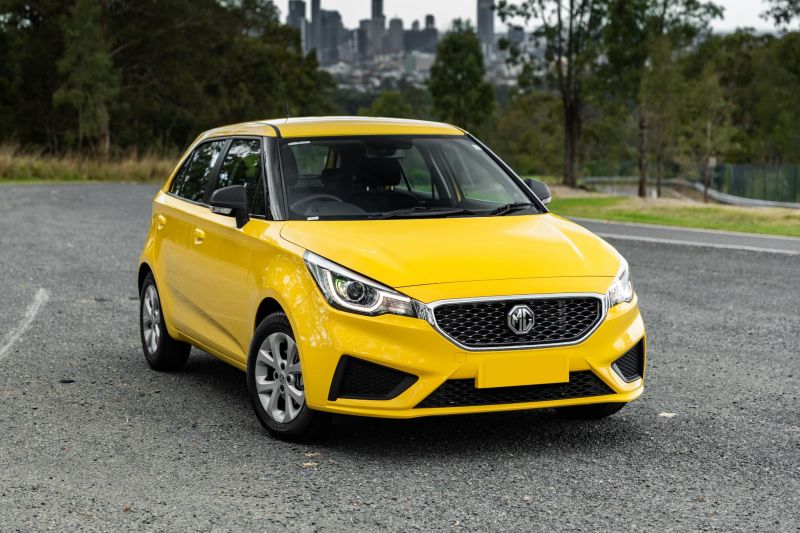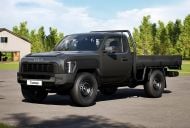The next-generation MG 3 looks set to launch here in July 2024 with a choice of two petrol and two hybrid variants.
After being revealed at last month’s Geneva motor show in hybrid guise, details of the petrol version have appeared in government approval documents.
According to the documents, the range comprises base and Lux grades, both available with either petrol or hybrid power.
Like the outgoing generation, the MG 3 packs a naturally aspirated 1.5-litre four-cylinder engine. However, it has ditched the dated four-speed automatic for a continuously variable transmission (CVT).
This produces 81kW of power at 6000rpm. The outgoing model produces 82kW.
As previously detailed, the hybrid mates a 1.5-litre Atkinson-cycle four-cylinder petrol engine – producing 75kW and 128Nm – with a 100kW/250Nm electric motor.
MG in Europe claims a total system output of 143kW, but the government approval documents list a figure of 155kW.
The MG 3 hybrid uses a three-speed automatic transmission and a 1.83kWh battery.
MG claims fuel economy of 4.4L/100km on the WLTP cycle, CO2 emissions of 100 grams per kilometre, and a 0-100km/h time of 8.0 seconds.
Comparing base models from the outgoing and upcoming MG 3 ranges, tare mass is up by only 15kg to 1185kg. In top-spec hybrid guise, it weighs 1300kg.
All models use four-wheel disc brakes and ride on 16-inch wheels.
The new MG 3 measures 4113mm long, 1797mm wide and 1502mm tall on a 2570mm wheelbase.
That makes it 108mm longer, 68mm wider but 2mm lower than the outgoing car, on a 50mm longer wheelbase.
It’s also set to be pricier.
“MG can confirm that, due to advancements in technology, safety and specification, the new MG3 revealed at the Geneva Motor Show will mean the popular model will no longer be a sub-$20,000 car when it launches in Australia this year,” said an MG Motor Australia spokesperson.
“There will be a price increase of around $5000 associated with the new model, thanks to the introduction of new world-class technology, safety updates and all-new specification.
“The current MG3 is at the end of its lifecycle which means that now is the best time to buy a brand new car for the price of a used one, before the new model hits our shores.”
More detailed pricing and specifications have yet to be announced for Australia, though we can look to Europe for clues.
Inside, there’s a 7.0-inch digital instrument cluster and a 10.25-inch touchscreen infotainment system.
Satellite navigation is standard, as are Android Auto and Apple CarPlay. Under the touchscreen is a row of piano-key switches that control functions like the climate control and audio volume.
Also standard on all MG 3 models are air-conditioning, four USB ports, and rear parking sensors and a reversing camera.
Higher-spec models add leatherette upholstery, heated front seats, a heated steering wheel, keyless entry, and a surround-view camera.
The MG 3 has received a major upgrade in terms of safety equipment, gaining autonomous emergency braking, lane-departure warning, lane-keep assist, adaptive cruise control and traffic jam assist.
MG says the new hatch features “ultra-high stiffness components” in its chassis, and lighter weight suspension components aimed at providing more athletic handling and a comfortable ride.
It also says it has focused on reducing noise, vibration and harshness for a “premium driving experience”.
The new MG 3’s price increase should see the Kia Picanto regain the title of Australia’s cheapest car. It had been priced from $18,890 drive-away, until a 2024 update – which brought a significant upgrade in standard safety kit – pushed its price up to $20,690 drive-away.
But it’s unclear how this new, higher price tag will affect MG 3 sales, given it’s the best-selling vehicle in its price-sensitive segment by a considerable margin.
Last year, MG sold 15,430 MG 3s. That gave it a 43.3 per cent share of its segment, well ahead of the second-place Suzuki Swift (6914 sales, 19.4 per cent share).
MORE: Everything MG 3

